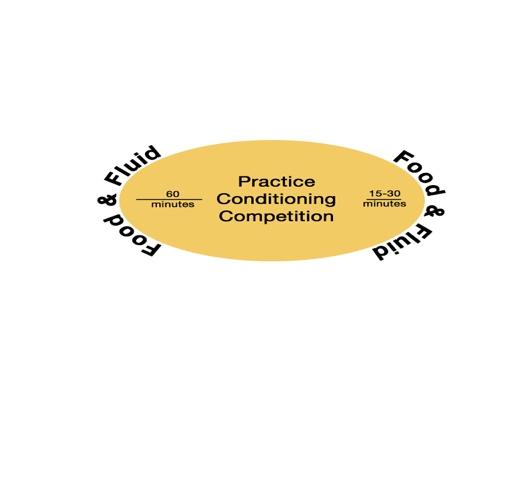PERFORMANCE EATING FOR XC
Leslie Bonci, MPH,RDN,CSSD,LDN
Email: [email protected]
www.activeeatingadvice.com
Cell: 412-559-5974
IG @boncilj
Twitter @lesliebonci

1. DRINK ENOUGH
MINIMUM NUMBER OF OUNCES PER DAY = F:70 oz/M 90 oz
ALL FLUIDS COUNT ( EXCEPT ALCOHOL!)
20 oz 1 hr before exercise
14-40 OUNCES Fluid per hour of exercise
Drink 3 cups of fluid for every pound lost
Sports drinks over water during exercise
All energy drinks are not created equally!
Larger gulps over sips
Swallow fluids
Drink, don’t pour on your head
No reason to overdrink
2. ADD SALT IF NECESSARY
If you are a salt loser, you need to use more!
Salty sweat or Salty residue on skin or uniform/clothes
Eat salty foods such as pickles, pretzels
Use salt, Soy or Worcestershire sauce
3. EMPHASIZE CARBOHYDRATES ON THE PLATE
Carbohydrates are not BAD foods!
3-4 grams/pound body weight/day
2/3 of the plate as rice, pasta, potato, bread, cereal, fruit, vegetables
Fuel for muscles during activity
Fuel for the brain during exercise
4. EAT ENOUGH PROTEIN FOR MUSCLE GROWTH AND A HEALTHY IMMUNE SYSTEM
0.5 x body weight (pounds) is the MINIMUM number of grams of protein a day
1 x body weight(pounds) is the MAXIMUM number of grams of protein a day
1/3 of the plate as chicken, fish, meat, eggs, cheese, soy foods nuts, seeds, beans
Body doesn’t really care what type of protein as long as you eat enough!
Body needs carbohydrate and protein to build new muscle
Too MUCH protein usually means Too LITTLE carbohydrate!
5. FAT IS AN ESSENTIAL FUEL FOR EXERCISE
Add some as part of every meal as a spread, peanut butter, salad dressing, or in a food such as cheese, meat, or even a fried food
There is no need to cut fat out of the diet
Limit BEFORE exercise as they can upset your gut!
6. TIMING IS EVERYTHING
Try to eat every 3-4 hours to give your body maximal energy over the day
Eat something within 15 minutes of exercise such as sports drink, cereal bar, trail mix to help your body recover
Try for 12-15 grams of protein with 35 grams of carbohydrate before resistance training to optimize muscle growth and repair
Protein sources (g) Carbohydrate sources (g)
2 TBSP peanut butter- 14 ½ of a bagel- 25 grams
8 oz yogurt- 10 8 oz yogurt- 40 grams carbohydrate
12 oz low-fat chocolate milk- 12 12 oz low-fat chocolate milk- 30 grams
¼ cup nuts- 10 grams 1 cup cereal- 30 grams
2 hard cooked eggs- 14 grams 2 slices of toast- 30 grams
7. HANDLING GUT ISSUES
To prevent upset stomach, diarrhea, heartburn before competition:
TRY TO WATCH
Fatty foods: bacon, sausage, pepperoni, fried chicken, French fries, chips
Caffeine Chocolate
Spicy foods
Lactose containing foods
Lot of fiber Fructose in fruits/fruit juices
LAST SOLID MEAL 3 hours before competition
To HELP with diarrhea
Oatmeal Bananas
Tea Rice
Liquids between, not with meals
Include sports drinks to replace what the body loses
8. FOODS TO INCLUDE RIGHT BEFORE AND DURING MEETS
Honey sticks Jello Sugar cubes Dry cereal Chex mix
Mini pretzels Sports drinks Honey packet Crackers
Gels Individual gel shots